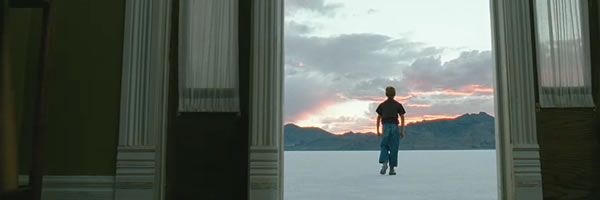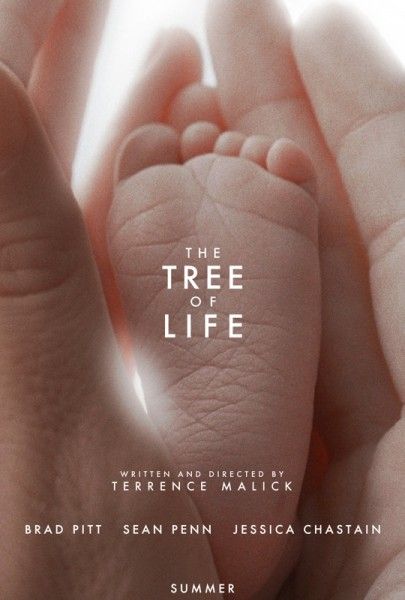Emmanuel “Chivo†Lubezki has worked on films as diverse as Burn After Reading, The New World, Sleepy Hollow and Children of Men. So what did the veteran cinematographer find so unique about shooting The Tree of Life?
“Once you think you got the formula, you realized there is no formula. It's like no set I ever worked on."
The shots on this film were anything but conventional, showcasing grand cosmic displays (with consultation from NASA) and the raw power of nature, often in place of an actor. Chivo describes the process in this way:
"Photography is not used to illustrate dialogue or a performance," Chivo said. "We're using it to capture emotion so that the movie is very experiential. It's meant to trigger tons of memories, like a scent or a perfume."
The Tree of Life, directed by Terrence Malick, stars Brad Pitt and Sean Penn and is slated to open May 27th, 2011. Hit the jump for a new image from Tree of Life, as well as more from Lubezki.
Director Terrence Malick (The Thin Red Line) is well known for the inclusion of natural settings and dynamic environments in his films. In the trailer for The Tree of Life, we get so many glimpses of nature shots that it seems the world around the characters has more facetime than the actors themselves. And it’s Chivo’s job to accommodate Malick’s unique style. In an interview with 24 Frames of the Los Angeles Times, Chivo commented on his work:
"So the actors are performing the dialogue, but Terry (Malick) isn't interested in dialogue. So they're talking, and we're shooting a reflection or we're shooting the wind or we're shooting the frame of the window, and then we finally pan to them when they finish the dialogue.â€
While the trailer suggests the cinematographer and director got along quite nicely, one wonders how stars Brad Pitt and Sean Penn reacted to all of this unconventionality. Chivo offers his take:
"I think they thought we were insane," Chivo said. "Sean is a director, and I'm sure he wondered 'Is this method something I want to learn or is it something I never want to repeat?' For Brad I think it took him a couple of days or a week to get into the spirit."
And in the spirit of the film, producer Dede Gardner (The Time Traveler’s Wife) had this to say:
"One of the things you learn when you work with Terry is there isn't one interpretation," she said. "Life's experience is individualized, so why shouldn't a film be?"
Here’s the official synopsis for The Tree of Life:
From Terrence Malick, the acclaimed director of such classic films as Badlands, Days of Heaven and The Thin Red Line, The Tree of Life is the impressionistic story of a Midwestern family in the 1950’s. The film follows the life journey of the eldest son, Jack, through the innocence of childhood to his disillusioned adult years as he tries to reconcile a complicated relationship with his father (Brad Pitt). Jack (played as an adult by Sean Penn) finds himself a lost soul in the modern world, seeking answers to the origins and meaning of life while questioning the existence of faith. Through Malick’s signature imagery, we see how both brute nature and spiritual grace shape not only our lives as individuals and families, but all life.
Here’s the note Malick wrote for AFM that describes the film (warning: spoilers):
From the Desk of Terrence Malick….
We trace the evolution of an eleven-year-old boy in the Midwest, JACK, one of three brothers. At first all seems marvelous to the child. He sees as his mother does with the eyes of his soul. She represents the way of love and mercy, where the father tries to teach his son the world’s way of putting oneself first. Each parent contends for his allegiance, and Jack must reconcile their claims. The picture darkens as he has his first glimpses of sickness, suffering and death. The world, once a thing of glory, becomes a labyrinth.
From this story is that of adult Jack, a lost soul in a modern world, seeking to discover amid the changing scenes of time that which does not change: the eternal scheme of which we are a part. When he sees all that has gone into our world’s preparation, each thing appears a miracle—precious, incomparable. Jack, with his new understanding, is able to forgive his father and take his first steps on the path of life.
The story ends in hope, acknowledging the beauty and joy in all things, in the everyday and above all in the family—our first school—the only place that most of us learn the truth about the world and ourselves, or discover life’s single most important lesson, of unselfish love.
-


